
Replacement Trailer Hub Bearing - 15123

Thank you! Your comment has been submitted successfully. You should be able to view your question/comment here within a few days.
Error submitting comment. Please try again momentarily.
- All Info
- Reviews (105)
- Q & A (0)
- Videos (2)
- Photos
etrailer Trailer Bearings Races Seals Caps - 15123
- Bearings
- Standard Bearings
- 5200 lbs Axle
- 6000 lbs Axle
- 7000 lbs Axle
- 1.250 Inch I.D.
- Bearing 15123
- etrailer
- Race 15245
High-quality, tapered roller bearing is designed for high-speed use. Replacement part uses industry-standard number.
Features:
- Inner diameter: 1.250"
- Matching race (sold separately): 15245
- Application: outer bearing for 42655, 42656 and 8-174-5 hubs
15123 Replacement Bearing
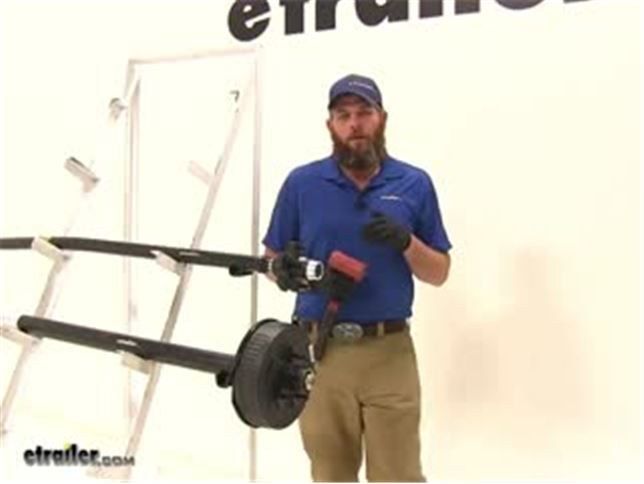

Videos are provided as a guide only. Refer to manufacturer installation instructions and specs for complete information.
Video Transcript for Trailer Bearings Races Seals and Caps Rebuild
Speaker 1: Today we're going to take you through the rebuild process on a couple of hubs. We've got an idler hub, and here we've got a hub and drum assembly. Works with electric rigs, but this can also work for just standard discs, if you've got a disc brake style setup.Basically what we're going to show you is how to get all of the bearings out. How to remove the seal. How to remove the race's if they're damaged, then get them replaced in the proper manner. We'll show you how to use an easy loop hub, which we have here.The first thing we are going to need to do is, get the grease cap off the end.
It can have either a rubber plug in it like this one does, or it can be a solid metal cap.These are pressed fit in there, basically by tapping on them on the back side. To remove them, a deadbolt hammer is typically what we're going to use. We're just going to start tapping as we go around. You'll see a little separation start right here, and slowly it'll work it's way off.Now the next step's going to vary a little bit depending on your axle setup. Do you see this is going to have a keeper that goes around the nut.
And that prevents that from being backed off, or removed. A lot of times you'll have a castle nut, which will have just little tabs that stick off, and there will be a cotter pin that passes through it. Just depending on your application, you need to get the keeper for the nut off. This style we just kind of pry out. A cotter pin you would just remove of course.Once we have that off ...
We'll start to take off the nut here, and the washer that's in behind it. Now yours should look a whole lot more dirty than this. There should be a lot of grease packed in, and through the hub, this one's brand new. We thought it'd be nice to show you the components before the grease was on .. Of our washer that comes off.And then here we're going to have our outer bearing.
Continue to pull that. We're gonig to have our inner bearing here. That sits in the backside of the hub. And we didn't put it in yet, we will show you how to put it in. But a seal would typically be covering the backside here. We'll show you how to use a seal removal tool, or another tool. To get that pried up and out. To get an access to that inner bearing.Now for a drum style like this, that process for disassembly is going to be just the same. One thing to keep in mind if you're using a disc brake setup. You'll have to remove the caliper before the disc is going to come off.Now once we have the spindle exposed, as we said this is going to be really greasy. We want to get all the grease removed, and the first thing we'll do is inspect it. We want to make sure that it looks just like what we have here. Everything's nice and smooth. We don't see any kind of discoloration, or any marring on the metal. Indicating that our bearing's got hot.If you do have any of those symptoms, at this point it's time to replace those bearings. You don't want to repack them. Get new bearings, and put in there. You might have a bearing that's come apart in here. Another surface to ensure is in good condition, is where your seal is going to go. That helps seal all the grease inside of our hub. With a damaged or broken seal, that grease is going to seep out. Either out of the hub, or in this case into our brake assembly.Now if your axle has brakes, we're also going to check the disc. Make sure it doesn't have any issues, or your hub. And this is going to be a hub and drum assembly. The brakes are going to ride on this machine surface. You're going to check that for signs of excessive heat, discoloration, or cracking. And this is our magnet surface. We'll check that surface for the same issues.Now inside the hub regardless if it's a disc brake, it's a drum brake like this. Or just a standard idler style hub. You're going to have an outer race. Would be right here, it's a small tapered piece of metal your bearing sits in, and rotates on. That's basically the outer portion of the bearing.You have the same thing here on the backside. This is called the inner race. Now if those show any signs of wear, overheating, or cracking. Those are also something we'll need to replace, which we'll show you how to do in just a minute.Now, with your brake assembly exposed, if you do have electric brakes like we have here. It's a good idea to check all the components for wear, cracking, maybe missing pieces. Check your pad thickness to make sure those are in good shape. Basically if you have a non working brake assembly and you put everything back together, you're just going to have to take it apart and do it all over again to get back to the brake assembly. This gives you a really good option to be able to change them out.And most applications are going to use a four, or maybe a five bolt flange to hold them in place. And you'll just remove the lock nuts, or sometimes you'll have a hex nut with a lock washer. You want to remove those, and then simply slide your assembly off after you cut the wiring.The friction material itself should also be checked for any kinds of cracking, or overheating. If you have any grease inside the system at all, it's likely it's gotten on those pads. It's a good idea to get those changed. Now as far as the removal of the races go, it's going to be just the same whether we're using an idler style hub like we have here. A drum brake like we have here. You can basically see where the idler is, here in the middle of the hub. It's going to go all the way around there, and we just have this extra material here to provide our braking surface.Now if you're doing a disc brake style job again, it's going to be just the same here with the races living inside of the actual hub portion. You'll just have the discs there for the brakes to make contact. We're going to use this little bit smaller one, it's a little bit easier to manage to show you how to get these out. We've talked about where the races are. The outer here, the inner being closer to the inside, but on the backside of the race there's a little lip. That lip's meant to stick out just a little bit further than the hub, and provide us an area to put our tool on, and help to drive that out.If you look all the way through there on that inner race, you'll see that little lip that sticks out just from the hub slightly, and it gives us enough area to use our tool on. Now generally to remove these you're going to use a punch, similar to this. Some guys will use a screwdriver. Or a piece of pipe. If you have a piece of pipe that's small enough to fit inside of that diameter, you can take that down through and allow it to rest on that lip.Use our punch, and then just need a hammer. And we'll start working that out. We're going to tap all the way around. Kind of equally, and evenly apply the force to get it to come on out of the bottom for us.You can see now as it starts to come out there's going to be a little gap created between the hub and the race. And we can just keep going, bringing it on out. Then you can inspect the inside of the hub surface there. Make sure no damage or anything has occurred, and repeat that same process for the outer race if you plan on removing and replacing that one.Now in the outer flat edge, you can see we're going to have our tapered edge on this side. If we roll our race over to the flat side, typically there's going to be a manufacturers part number on there. That will help you identify which race it is, that you need to go back in your system. If those are rubbed off, worn off, if you can't read them. You can measure the outside, to outside diameter of the race here. It's a good idea to use a micrometer to get it exact.Now here's your basic micrometer. And again, the outside of the race is what we're going to need to measure. You want to go . I set the thickest point there. Looks like this one's going to be about 1.98. That's going to be the measurement you'll want to supply.Now while we've got this out, let's also look at the proper way to measure our bearing. Instead of the outside for the bearing, we need to measure the inside diameter. That's going to be pretty simple. Let's pull that out, find the largest measurement we can. Which here, looks like it's going to be 1.03. With that information, we'll be able to get the correct bearing, and the correct race, so they'll fit together properly and make a full bearing kit for us.Now here's the race, we're going to show you how to get this put back in. Basically just going to press fit inside of our hubs. We need to get it down on there. Kind of like that. And you'll have a couple options. A lot of times you're going to see do it yourself or at homer, just going to use a wooden block. Just place it on there. That's going to get you started, but at that point you'll struggle in getting it to go all the way down into it's seat.Now to take care of that problem, there are several seal drivers that are available. Seal and race drivers that are available out there on the market. It's designed to fit down inside of our race, inside of our hub and get it down there where it needs to go. This is part number ptw83020, has several different sizes, even if you have multiple trailers it's going to do the job.Now the side with the angle on it, is designed to fit down inside of our race. If we use the other side, that's going to be for driving your seal into place. Just want to hold it, and take it on in with your hammer. You'll see, you just want to insure that our race is all the way up against that line on the hub where it's supposed to mate to.Now when it comes time to pack your bearings you're going to have several different ways of doing this. You can just use your hand, is the traditional method. That's going to be the method probably reserved for the very occasional trailer work kind of situation. If you do it once or twice a year, probably get away with it that way.Next you would go to a, kind of a sandwich funnel style almost. If you look inside of there, you can see the bearing. It's located between the two pieces. Just use a grease gun. Start filling that with grease, and that's going to fill our bearing for us. And the third, with this one you're just going to place your bearing down and in. It should be pretty close to center. And then we've got our cone her that's going to go down and secure that.Now I think this style, wastes a little bit more grease than what this style will. This has a dust cap. You can see, you can keep your grease in there, put your dust cap on there and save it for later use. This will be if your going to do it every couple years. And this particular style would be if you're a more regular user.Let's start by showing you how to use a bearing packer. Similar to this. Again, we've just got our grease inaudible 00:11:07 here on the top. And then just slowly start to fill it. Now I like this style quite a bit. I think even regular users might enjoy it, because you can get a really quick visual look at that bearing. You're not going to have to overdo it, or have to much grease.You can kind of see in there now, we're starting to get grease to come out of it. Couple more pumps, we'll be good. You can see we've got grease coming out all the way around. Where all of our bearings are. Got a little bit of excess there. Just take that around the outside of it. And then we should be able to lift it off. And now you can see what we we're talking about. Just a little bit of excess there, that you're just going to wind up wasting.Now we'll take our bearing, we're going to place it right down in our race. And then we'll cap off the back with our seal. Right now our seal's going to fit in just like our race did. It's going to have a little bit of a pressure fit to it. Now very often in this situation, I see people using the four by four method. Kind of here, just placing that on and tapping it. As an option though, if you do have one of these. You can see that's designed to fit right on the top of the seal. And help drive it in.The biggest thing here is, just going to be getting it driven in squarely. You can see, this side's in a little bit further than this side. I'm going to start this side first. Now since we didn't have the opportunity to show you before, we're going to take a look at pulling a seal. Now this is a seal puller, we carry this on our website part number ptw1219. This is meant to hook underneath the seal. And then you kind of pull up on it, and just like our race you'll have to work all the way around that edge. Just bringing it out a little at a time.If you don't have that available. Another option would be a screwdriver. You just kind of get that under the seal, and turn it. And see, that'll allow you to also pop that out. We've taken care of our race. Our inner bearing. Our seal. The last component, before we put our hub back in place is going to be our outer bearing. Now with this bearing, I'll show you the hand packing method.This is definitely . Slightly dirtier method than the bearing packer. When we get grease on our hand we want to look at the larger side of the bearing. This is the smaller side. We have a larger side In between the inside and outside there's a gap. We can see our rollers in there. We want to grab that, and use that gap and shove grease inside of it. Now this is going to take a little bit, you want to work in the same spot until you get the grease pushed all the way through. We can see on the top there we've got a little bit starting to come through.And once we push it in the bottom, and you see it start coming out the of the top in those little drips, it's going to indicate that, that section's fully packed. Just need to work all the way around their outside edge now and do the same thing. Alright, once that's all the way around . The bearing will be ready for use.Now one more thing I like to do. We can see our inner bearing there, and our outer bearing. Well between the two, got a pretty big gap in there. If you'll take a . Pretty good amount of grease. We're just going to go all the way around. See how we can go all the way around the inside and just line that really well. The more grease we have in here, the less chance we have of any moisture getting in there, which can cause corrosion, rust, pitting. Pretty much things we do not like when it comes to bearings, races, and hubs.Put plenty of grease in there. And then this one does have the easy lube spindle, that'll even fill it in more. Now we can get our assembly slid on. I like to keep my thumbs on that outer bearing, just to prevent it from . inaudible 00:15:28 pushed off there. Now we can put on the original hardware that we removed, in taking off our hub the first time. In our case, we had our washer and our nut.Now most commonly you'll see pliers similar to this being used. We basically want to get that tightened down. Once it's fully tightened down you'll feel some resistance in the hub. We back it off just slightly. That'll give us a little bit more freedom of motion there. Something you don't want however . Is any movement in, or out on your hub. You want to be sure that everything is compressed, and you don't have what's called end play. Which would be the play in and out.Once we've got that set, then you'll put on whatever tight keeper yours came with. Get that put back in place. Now with an easy lube style hub, you're going to place your grease gun on the end, and then you can just fill the remainder of that hub up.Now for your typical applications, you're either going to have a solid cap, or a cap that'll have a rubber plug in it. A solid cap's going to be for an axle without the grease inaudible 00:16:51 here on the end. Goes on there. Just knock it on with your rubber mallet. Same with the one with the plug. Just gives you a removable area there, be able to cap that off.We'll show you how to put that on. Now as alternatives as well, a lot of times on boat trailers and marine kind of situations. You'll see a bearing buddy. This is going to apply a little bit of pressure on the grease, you'll fill it up. This kind of comes out just a little bit. That applies constant pressure on the grease to make sure we don't have any air, or anything like that. Then there is also an oil bath hub available. Now this is going to be for use with seals that are going to be designed specifically for oil bath use. You'll have to change that seal.We're using a double lip seal. There are also single lip seals available. Of course a double lip seal is going to give you just a little additional security. Keep that in mind when you order. But let's get this knocked on there now so you can see how that works. We just want to take the cap, we're going to center it. This is going to be very similar to what we did with the seal. And then just gently start tapping it around the outside. And it'll seep down on there for you.It's really going to be the same thing that you'll do with any of the end caps. Now with this side done, it's a good idea to take care of all the other hubs. Get them all on the same maintenance schedule. And as long as you'll periodically check the grease, take your trailer out for a trip occasionally. Just to keep everything lubricated. It should extend the life of these parts, and give us years of good service.
Customer Satisfaction Score:
99% were satisfied with this product
1% of customers were not satisfied
- Wrong item was ordered
- Product did not meet expectations
- etrailer mistake
Customer Reviews
Replacement Trailer Hub Bearing - 15123 - 15123
Average Customer Rating: 4.7 out of 5 stars (105 Customer Reviews)
High-quality, tapered roller bearing is designed for high-speed use. Replacement part uses industry-standard number.
Great quality, great prices. I converted an old gooseneck trailer from the open center mobile home-style hubs to modern 6k hubs on a budget. These fit the replacement hub/brake units that I had. Was able to get all the missing pieces I needed from etrailer.
All items were received in a timely manner, packaged decently and no damage upon receipt. I have yet to install however, hubs/rotors appear to be in pristine condition. Bearing and seals also appear to be top quality.
I received the shipment today, quick 3 day delivery. I was somewhat surprised to find each item loose in the box, definitely not how I have seen bearing when opening a box. Being shipped loose in a box does not prevent damage to some of the parts or prevent moisture damage (rust). For the parts I will not be using immediately, they will be packaged separately and coated in a film of oil or grease to prevent rust.
This was a perfect fit for my Lippert 6,000 lb. axle outer wheel bearing used on our 2006 Heartland Bighorn 3055 5th wheel.
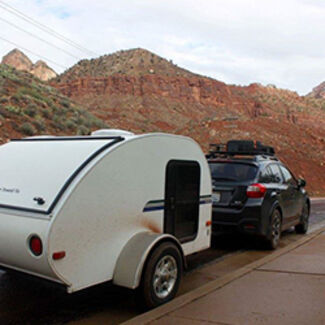
Ron S.

8/17/2016
So Far, So Good, Better bearings than original.
I was surprised that they were shipped loose in the box to just bang around
Just what I ordered. Order arrived very quickly! Customer service A+

Bought new axel parts and brakes bigger wheels for my boat trailer. My existing axel was 20 years old and never was adequate for the weight it hauled causing wheel bearings to wear out and the chance of loosing a wheel. This was the most economical way to repair as a new trailer was so expensive. All the parts I needed were available and went together beautifully. Very happy with etrailer, this is not the first time I have ordered from them great option for any parts you need.
I think the product is fine only time will tell but the process of ordering and the rapid delivery and Stacy we the best me trailers has it ad the price is good and as promised
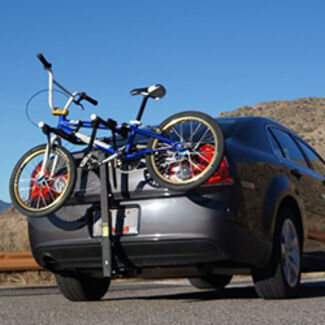
Leland

5/10/2021
Flawless

One year and no problems.
I have used etrailer bearings and races for the last 10 years on our 5th Wheel trailer. The etrailer.com web site is easy to navigate and the ordering process is helpful and easy to navigate. All my etrailer orders arrive on schedule and the products arrive in perfect condition.
Based on my experience with etrailer I recommend ordering products from this company to all my friends that do their own work.
Product good, Shipping great, packaging for shipping very bad. I have worked with bearings for 40 years and have had several training's for timken, fag, and others.
never have i seen bearing just put in a box with no covering. bearing should be sealed and not allowed to spin freely until time of use. they are usually wrapped with some sort of covering or at a minimum boxed individually.

Used these on a homemade flatbed reusing an old camper axle from the 50's the numbers on the old bearings did not cross to anything current, fortunately E Trailer has the specs online a few measurements with a caliper and you are in business. Thanks E Trailer
I have a 10K dump trailer that I lent out, it was overloaded and bent an axle. Having never replaced one. I was grateful for the assistance getting the correct parts, including an axle, bolts, bearings, seals etc. The parts fit and assembled well. Nice going fellas, I'll be back.
It was great doing business-- Customer service helped me with some options on my order when the races needed in a kit were not in stock for another 2 weeks. Sent the rest of my parts rather than wait for the races, (found the races locally at 80% more cost ) but I am able to get my boat trailer on the road in time for our planned vacation. Their prices will save you money! I highly recommend them and will order in the future. One small con- As I read in other posts, It would be nice to see them individually wrap all bearings and races ( rust preventive or kraft paper perhaps?) to prevent nicks and scratches in shipment, but otherwise I am completely satisfied with their service and pricing!

I have an older boat trailer and was able to find all the parts I needed to get it back on the road on etrailer.com
As always the shipping was quick and everything was packaged professionally. Parts went on with no problems. etrailer is my go to place for rv 5er parts. Also if you have a question just ask their experts and you will get a fast and accurate reply.
The trailer I'm rebuilding had obsolete bearings, but using a caliper I was able to find everything on etrailer. My local trailer supply place was ridiculously over priced so I went with etrailer. Thank You for the quick delivery.
Had to return my first order. etrailer offers services for identification of bearings from numbers on the side of the bearing; type bearing used on type axle; weight class of the bearing; and "some" dimensions. None of the aforementioned were available to me and I matched the published dimensions. It was the missing dimension that was wrong and not published which led to the wrong order. All my orders with etrailer were right on except this one- tough situation for the supplier and the buyer, perhaps an area in need of improvement.
My order shipped and was delivered faster than expected. The parts are top quality and the installation has gone smoothly. I am very pleased with the staff at e trailer as they were very helpful, courteous, and were genuinely concerned with my order. I definitely will order again from e trailer and will recommend them to my friends.
Thank you e trailer for your help.
"Corroded/rusty grease seal I received was promptly replaced with a new one being sent to me. Thanks etrailer for the prompt response!"
i actually had two orders, one with Lori and one with Nicole. Both were very
helpful and i couldn't have had better service and assistance. I'm very pleased with everything. I have the parts installed completely and never took any pics.
shipping was very good also. if i need anything i'm sure to call etrailer. thanks john

etrailer always has the best prices, fastest service and highest quality products.
Excellent: big issue to me: salesperson knew what she was selling. Bearings are for later when we check the brakes and bearings in June on the trailer

etrailer is the only place i shop!!!!!! !!
Everything checked out pretty well. It all fit as it should and seems to be as same quality as what was removed. looking forward to using etrailer again for parts.
Thank you,
Jeysson
See what our Experts say about this etrailer Trailer Bearings Races Seals Caps
- How Do Axles Attach to a Trailer or Mobile Home FrameThe first thing you should know is that if you went and got 3 mobile home axles then they would have to be new, never used, because they are meant for one-time use only. If you have 3 regular axles then they should be fine as long as they are in good working order. Axles attach to a frame through the suspension. The axles are attached to the leaf spring stacks with a u-bolt kit and the leaf springs are bolted to hangers that are welded to the bottoms of the frame rails. Assuming that...
view full answer... - Replacement Trailer Wheel for Mobile Home Axle with 4 Bolt Wheels and Star-Shaped Pilot HoleMobile home axles are designed for one-time use only by the manufacturer. Because of this it is very difficult to find any replacement parts. It kind of sounds like you are talking about a 4 on 9.44 bolt pattern. We do have some wheels like this that I have linked for you. I do not recommend keeping that axle because of the lack of parts available and because its designed for one-time use. What I would do is replace the axle. You can order an axle from a local tractor or trailer supply...
view full answer... - Bearings for the Dexter 8-201 Hub/DrumIf you have a number 42 spindle your spindle should be 1.74 inches where the outer bearing rides and 1.25 inches where the inner bearing rides. I would recommend you take some measurements on the spindle you have to verify what you have so that we can pick you out the correct hub because it doesn't sound like you have a 42 spindle. It sounds like you might have a BTR spindle which has a grease seal diameter of 1.5 inches (easily confusable with inner bearing diameter, inner bearing of...
view full answer... - Available Trailer Wheel Bearings with 1.250-Inch Inner DiameterThe very best way to find a replacement wheel bearing is to locate the part number stamped into the bearing's outer housing. Please refer to the linked photo to see the typical placement and appearance of bearing, race and seal part numbers. When part numbers are not available it is possible to take measurements of the spindle (for the bearing's inner diameter) and the hub bore (for the bearing outer diameter). We do have several wheel bearings with the 1.250-inch inner diameter you mentioned....
view full answer... - Axle Replacement Recommendation for a Trailer With Mobile Home AxlesMobile home axles are designed as one time use axles. They usually have odd spindle sizes on them that make them incompatible with standard trailer hubs. The only recommendation I could make for you would be to install new axles on your trailer. I attached a page that has all of the axles we have with the correct hubs included. You will need to select the capacity you need from the facets on the left, followed by selecting the overall length axle you want from hub face to hub face, then...
view full answer... - Can Mobile Home Axles Be Converted to Standard Trailer Wheels and HubsThe thing about mobile home axles is that they are usually designed for one time use and the spindles have non-standard dimensions so we don't have hubs that would fit them. The best option I could make would be to replace the axles with new ones so that you can use a normal style of trailer wheel. To see all of the axles we offer check out the link I attached. If you need axles with different dimensions you would need to find a local place that can custom order you axles.
view full answer... - Can Trailer Brake Assemblies Install on Either Side of Trailer AxleTrailer brake assemblies are not ambidextrous as the brake actuating arm only really works if pulled in one direction. If you installed the wrong side axle's assemblies on a trailer the brakes would barely work if at all since the magnet would pull the arm in the wrong direction.
view full answer... - How to Add Brakes to a Trailer AxleSounds like you are looking to upgrade a trailer from having idler hubs to one that has brakes. There are several things to consider and determine to do this. If you check out the FAQ article I attached you will see exactly how to add brakes to a trailer that didn't have any. I attached articles. One for adding electric brakes and one for adding hydraulic brakes. You will need to remove your hubs to either get the bearing numbers or spindle dimensions so that you can determine what hubs...
view full answer... - Can Either Wire of Trailer Brake Magnets be Used for Power or GroundBrake magnet wires are not polarity specific. Either can be used as power or ground as long as the other wire is used for the opposite circuit.
view full answer... - Replacement Bearing For Timken 15123 Trailer Hub BearingWe do offer the Replacement Trailer Hub Bearing, part # 15123 for your trailer but I was unable to find a cross-reference for the Timken 09067 bearing you stated you need. You can measure the inner diameter and see if there are any bearings from the attached pages that would work as a replacement for you. We also offer the matching race for the 15123 and that is part # 15245.
view full answer... - Is There a Trailer Bearing with Inner Diameter of 1-3/16"I do have some options for you but bearings are not measured using fractions, they are measured using decimals to the nearest thousandth of an inch. It's not possible to be precise enough with a ruler or tape measure to record bearing diameters, you need a caliper. The closest we have to 1-3/16" is 1.250". Some common bearings which have this size are are part # 02475 which has a 2.688" outer diameter race or part # 15123 which has a 2.441" outer diameter race.
view full answer... - Replacing Bearings On A 2003 Four Winds Boat TrailerI can certainly point you in the right direction, but I do not have a way to look up bearing specs for a trailer based on a year make and model. If only it were so easy right? Now since it is a 6 lug hub, and a GVWR just under 10K, you likely are dealing with either 5,200 lb axles, or 6,000 lb axles. These axles can use a few different bearing sizes/combinations. Most commonly it would be a # 25580 (1.75" inner diameter) inner bearing and a # 15123 (1.25" inner diameter) outer bearing....
view full answer... - How to Tell Torsion Axle CapacityThe only way to tell the capacity of a torsion axle, if you cannot find any markings on the axle itself to identify it, is to remove the hub and check the bearing numbers. You will then be able to reference the hub bearing numbers to the rating of the hub, which will be the same as the axle. For example if you had inner bearing # 25580 and outer bearing # 15123 then it is likely a 6,000 lb axle. Without any identifying markers this would be the only way to know how what your capacity...
view full answer... - Can a 14125A Trailer Wheel Bearing Replace a 15123 BearingNo, the # 14125A bearing has different applications than a # 15123 bearing. The outer diameters are different. Both are readily available bearings. If you have a 15123 bearing then you would need that same bearing as a replacement. If you can provide the inner and outer bearing numbers on your existing hubs, I can make some recommendations for replacement parts. I have included a video on bearings for you.
view full answer... - Can Trailer Hub Be Changed from Bolts to Standard Wheel StudsIt is potentially possible to change a hub from bolts to standard screw-in wheel studs. In order to do this a number of features have to match up between the bolts and studs. The diameters of both the original bolts and the replacement studs must be the same. Their thread pitch must also match to ensure the screw-in studs, like Redline # 25-53 for instance, will properly fit into the threaded holes in the hubs. This particular screw-in stud has a 1/2-inch diameter with fine threads (20...
view full answer... - Can I Use Different Bearings If the Inner Diameter (I.D) Is The SameYou are correct, when replacing the hub/drum on your trailer you will only need to match the spindle to the inner diameter (I.D) of the bearings. The outer diameter (O.D) of the bearings would obviously have to match the hub but if you purchase them together as a kit then there would be no need to do this as it has already been done for you. The reason for this is that there can be more than one bearing with the same inner diameter (I.D). For example, part # 15123 and part # 14125A both...
view full answer... - Can Two Different Hubs that Use the Different Bearings Be Used on Same Trailer AxleThe # LM67048 and the # 15123 both have the same inner diameter of 1.250 inches. So in theory they would both work on the same spindle. It sounds like you are thinking about using two different hubs on your trailer axle. As long as the hubs both use bearings and seals that fit the spindle they are used on you would be fine.
view full answer... - Differences Between 3" Dexter Axle D44, D52, and D60 AxlesYes, the different Dexter Axle numbers correlate to various axle dimensions and setups. You always want to match the specs from your new axle to that of your old axle to make sure everything matches, lines up, and is able to handle the amount of weight you'll have in your trailer. For example, the Dexter Trailer Axle Beam with E-Z Lube Spindles # 7461121 is rated for 6K lbs, has a hub face of 95" and a spring center of 80", and comes with spindles that use inner bearing # 25580 and outer...
view full answer... - Which Grease Seal for Trailer Hub is Associated with Bearing # 15123The grease seal most commonly associated with the bearing number # 15123 is going to be the part # GS-2250DL which has an inner diameter of 2.25 inch and outer diameter of 3.376 inch.
view full answer... - Proper Bearing Replacement Based on Both Inner Diameter of Bearing and Outer Diameter of RaceWith the inner diameter of your bearing being 1.250 inches, there are currently 5 options as you stated. The best way to determine fit is to find your race number or to measure your bearing race inside your hub. The outer diameter of that race will help us confirm the proper bearing fit. For instance, if the outer diameter of the race is 2.441 inches, then we know the race is # 15245 and the bearing needed is # 15123. I've attached a photo to assist.
view full answer... - Can Trailer Axle 8327816 Use Hub with Outer Bearing LM67048 and 15123Yes, since the inner diameter of the two bearings you mentioned # LM67048 and # 15123 are both 1.25 inches you can use a hub that has either. Basically any 5,200 to 7,000 lb hub will fit as they are designed to fit the number 42 spindle dimensions this axle has.
view full answer... - Bearing Replacement for Dexter 6,000 lb Trailer AxleFor your Dexter 6k axle the bearings you would need are part # 15123 and # 25580.
view full answer... - How to Determine the Weight Capacity of a Dexter Hub and AxleBased on your bearing dimensions, I think Dexter meant to say that the replacement hub for you is a 6-lug hub rated for a 5,200 lb axle, not that it is a 5,200 lb hub. Your axle is likely rated for 5,200 lbs, especially since the axle tubing has a 3-1/2 inch diameter. I have not heard of a hub with a 6-lug bolt pattern for a 10,000 lb axle or a 10,000 lb axle with 3-1/2 inch diameter tubing. The Dexter Hub Assembly, # 42655UC1, that you referenced is likely going to be the hub that you...
view full answer... - Availability of Trailer Bearings 15123 and 25580 for 2007 Wildcat CamperBearings # 25580 and # 15123 are a common combination for hubs on 5200- to 7000-lb axles. The linked page displays hubs that fit this bearing set. We offer both of these bearings individually as well as parts of kit # BK3-100 which also includes a cotter pin and grease seal.
view full answer...
Do you have a question about this Trailer Bearings Races Seals Cap?
Info for this part was:












At etrailer.com we provide the best information available about the products we sell. We take the quality of our information seriously so that you can get the right part the first time. Let us know if anything is missing or if you have any questions.



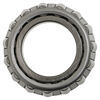



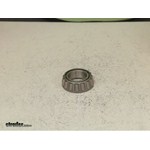






















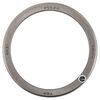



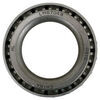








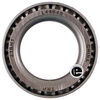

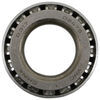






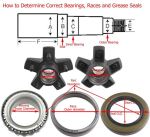
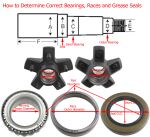
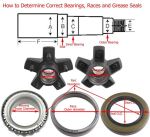
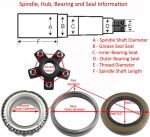
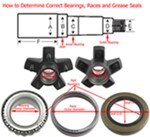
Robert H.
10/17/2022
I added the bearings and endcaps to my spare parts inventory.